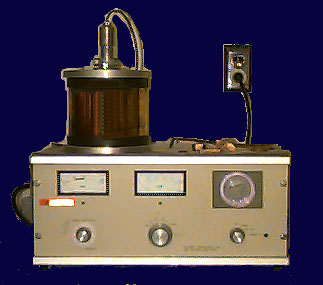Since the SEM uses electrons to produce an image, most conventional SEM’s require that the samples be electrically conductive. Specially designed SEM’s called environmental SEMs are now available which can be used to view non-conductive or even wet samples. The regular SEM, which we have in the Iowa State Materials Science Department, requires a conductive sample. All metals are conductive and require no preparation to be viewed using an SEM. In order to view non-conductive samples such as ceramics or plastics, we must cover the sample with a thin layer of a conductive material. We do this using a small device called a sputter coater.
Sputter Coater
 |
A sputter coater coats the sample with gold atoms. The purpose is to make non-metallic samples electrically conductive. |
The sputter coater uses argon gas and a small electric field. The sample is placed in a small chamber which is at vacuum. Argon gas is then introduced and an electric field is used to cause an electron to be removed from the argon atoms to make the atoms ions with a positive charge. The Ar ions are then attracted to a negatively charged piece of gold foil. The Ar ions act like sand in a sandblaster, knocking gold atoms from the surface of the foil. These gold atoms now settle onto the surface of the sample, producing a gold coating.